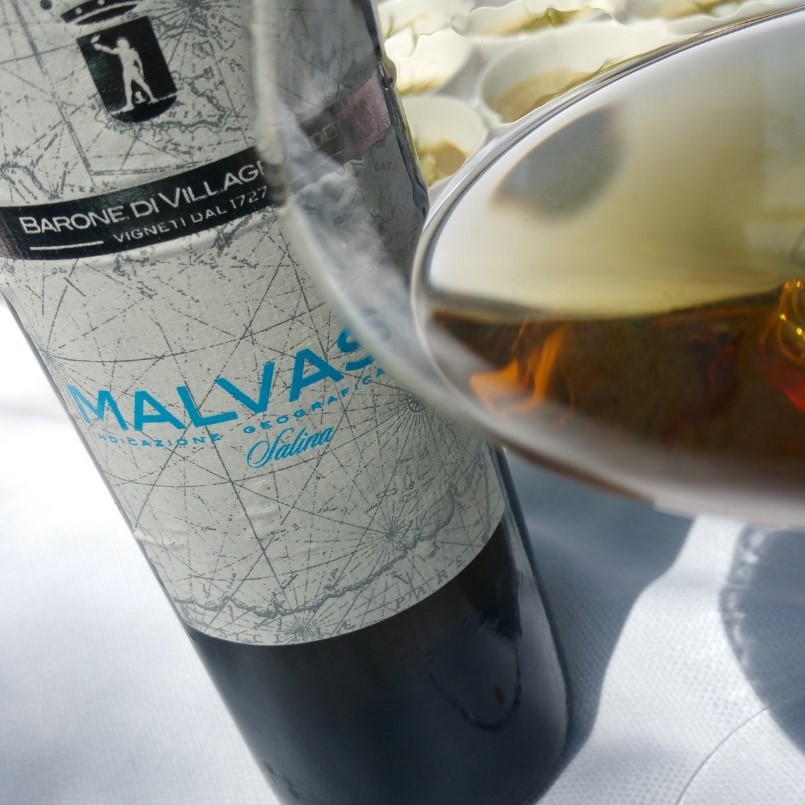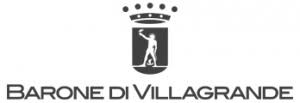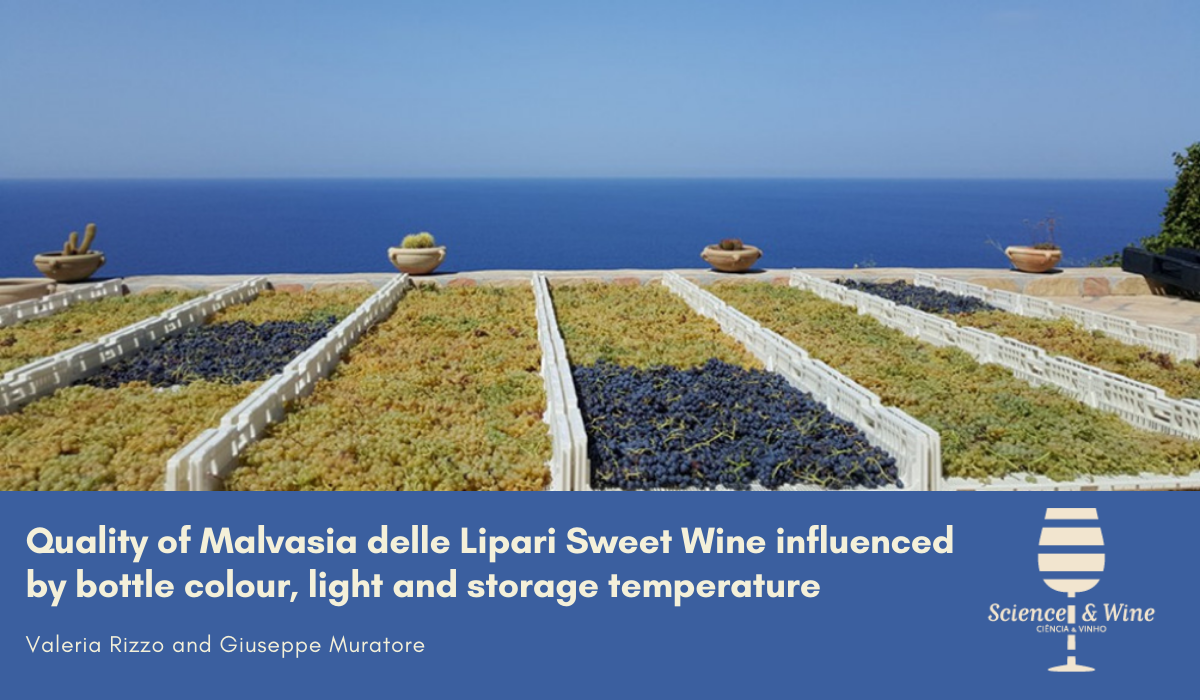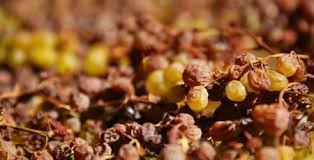By Valeria Rizzo and Giuseppe Muratore
The Malvasia delle Lipari DOC wine (MdL) produced in the Aeolian Islands (Italy) as a liqueur wine, with minimum developed alcoholic strength of 20% v/v, is one of the most ancient and aromatic wines of Sicily. The art. 6 of the Regulation D. P. R. 20/09/1973 ʺAssignment of the denomination of controlled origin of “Malvasia delle Lipari” wineʺ [1] describes the main characteristics of the MdL wine when it is released for consumption. The attention is also focused on the color, which must be golden yellow or amber yellow, underlining the importance of such a factor. Considering how the color could change during the storage, we focused on different colored glass bottles and different storage conditions during the shelf-life of the product.
In MdL, the high level of sugars and the low pH value suggest the possibility to develop sugar degradation products, such as 5-hydroxymethylfurfural (HMF) and 2-furaldehyde (2F), generally considered as indicators of heat processing and/or the pro-longed storage of foods [2]. Both HMF and 2F are the most important intermediate product derived during the early stage of Maillard reaction [3]. HMF is used as a quality parameter in several processed foods, and in fortified wine with different sweetness levels, its concentrations were strongly dependent on time and temperature used during winemaking [4].
The primary objective of packaging is to protect and retain, as much as possible, the quality of foods and beverages. The classical packaging material for wine is glass, appreciated primarily for its oxygen barrier [5], clarity and inertness: this feature, with respect to the migration of low molecular weight compounds from the package to the product and/or flavor scalping by the packaging material is of the utmost importance [6,7]. Wine has traditionally been stored in glass bottles of different colors and shapes, whose selection is often driven from market forces in the attempt to make the wine readily identifiable and more attractive to the consumer.

Wine shelf-life is defined as the time that it remains stable, in terms of its chemistry, microbiology and biochemistry as well as its sensory properties, however chemical changes may occur during storage, improving some quality parameters. Color is among the main sensory attributes determining consumers’ preference and it is considered a major feature for the assessment of red wine quality.
Many authors have studied the effects of time, temperature and storage conditions on the phenolics composition and color of red wines [8–10].
The deteriorative effect of light depends on other factors, such as the duration of light exposure, light spectra and intensity and the composition of the food product. The effect of light can be explained by both photolytic autoxidation, which corresponds to the production of radicals during exposure to UV light, and photosensitized oxidation, that occurs in the presence of photosensitizers and ultraviolet or visible light.
The aim of this work was to study the influence of different lighting conditions, bottle color and storage temperature on the quality parameters of MdL wine.
Overall, the quality parameters of MdL wine were not significantly altered with the exposure to different lighting conditions and under different storage conditions, however, some changes in the color parameters occurred in every tested condition. In contrast with common beliefs, the bottle color did not play a significant role in the quality maintenance of this sweet wine. The significant increase in the levels of HMF and 2F was mainly dependent on the intensity of lighting and on the storage temperature, as confirmed by the activation energy, without noticeable effects of the bottle color. Results suggest that retailers have a higher responsibility in the product quality maintenance compared to the company’s choices of bottle color, which, in the specific case of MdL wine, can be merely driven by marketing consideration. In conclusion, the quality maintenance of wine can be achieved by controlling environmental factors, such as light exposure and temperature, during its storage guaranteeing profits for wine producers and satisfaction for consumers [11].
Read all at: https://www.mdpi.com/2304-8158/10/8/1881


Valeria Rizzo 
Giuseppe Muratore 
Valeria Rizzo achieved the degree in Food Science and Technology cum laude (2003) at the University of Catania. PhD in Food Science and Technology (2008), her professional skills and scientific research activity cover different field of the food technologies, from chemical and qualitative analysis of nutritional compounds to food processing, from packaging systems to the overall quality and safety of food products. She worked in different research centers as University, CRA (Council for Agricultural Research) and CNR (National Research Council of Italy). In the academic year 2017/19 she has carried out teaching activity in the master degree course in Food Science and Technology during such activities she has tutored thesis and apprenticeships. Her research activity has produced more than 50 publications on qualified national and international journals and on congress proceedings. She is a referee for various international scientific journals.
Giuseppe Muratore achieved the degree in Agricultural Science 110/110 cum laude in 1990 at the University of Catania; since 2015 he is associate professor in 07/F1 “Food Science and Technology, in the AGR/15 sector – Food Science and Technologies, at the Department Di3A – Section of Food Technologies, University of Catania. Since the academic year 1997/98 he has carried out an intense teaching activity; at present he is teacher of “Food Packaging” in the master degree course in Food Science and Technology (LM70) and “Process and Sensory Evaluation of Food” in the degree course in Food Science and Technology (L26). Has tutored numerous thesis and apprenticeships, moreover he covers some institutional academic roles. From 2016 to 2020 was the President of the Food Science and Technology course (L26). He has made agreements with some universities of Brazil and he has tutored stages of visiting professor and foreign students at the Di3A. He is in charge for the agreements with the macro-area “Latin America”. He received the Scientific Productivity Award “Food Packaging Research –GSICA awards” on 24/06/2005. He is a member of Collegio docenti of International postgraduates PhD course in “Agricultural, Food and Environmental Science”.
He is a member of several associations:
- Professional Order of Agronomy and Forestry Doctors of Catania;
- Italian Scientific Group of Food Packaging (GSICA), where he is a member of the Board of Directors;
- Italian Society of Food Science and Technology (SISTAL);
- Italian Enotechnical Enologists Association (AEEI);
- National Organization of Wine Tasters (ONAV).
His professional skills and scientific research activities cover different areas of food technology with particular reference to food processing, packaging systems and their influence on the quality of food products
His research activity has produced more than 200 publications on qualified national and international journals and on congress proceedings. He is a referee for various international scientific journals.
References
- D. P. R. 20.09. 1973. Assignment of the denomination of controlled origin of “Malvasia delle Lipari” wine Official Gazzette of the Republic of Italy n° 28, (30.01.1974). http://catalogoviti.politicheagricole.it/scheda_denom.php?t=dsc&q=2175 – (22/01/2018).
- Muratore, G.; Nicolosi Asmundo, C.; Lanza; C.M.; Caggia, C.; Licciardello, F.; Restuccia, C. Influence of Saccharomyces uvarum on volatile acidity, aromatic and sensory profile of Malvasia delle Lipari wine. Food Technol. Biotech 2007, 45, 101–106.
- Belitz, H.B.; Grosch, W.; Schieberle, P. Food Chemistry, 3rd ed.; Springer: Berlin/Heidelberg, Germany, 2004; pp. 258–282.
- Pereira, V.; Albuquerque, F.M.; Ferreira, A.C.; Cacho, J.; Marques, J.C. Evolution of 5-hydroxymethylfurfural (HMF) and furfural (F) in fortified wines submitted to overheating conditions. Food Res. Int. 2011, 44, 71–76.
- Del Nobile, M.; Ambrosino, M.; Sacchi, R.; Masi, P. Design of Plastic Bottles for Packaging of Virgin Olive Oil. J. Food Sci. 2003, 68, 170–175.
- Piergiovanni, L.; Limbo, S. The protective effect of film metallization against oxidative deterioration and discoloration of sensitive foods. Packag. Technol. Sci. 2004, 17, 155–164.
- Licciardello, F.; Del Nobile, M.A.; Spagna, G.; Muratore, G. Scalping of ethyloctanoate and linalool from a model wine into plastic films. LWT 2009, 42, 1065–1069.
- Sims, C.; Morris, J. The effect of pH, sulfur dioxide, storage time and temperature on the color and stability of red muscadine grape wine. Am. J. Enol. Vitic. 1984, 35, 35–39.
- Gomez-Plaza, E.; Minano, A.; Lopez-Roca, J.M. Comparison of chromatic properties, stability and antioxidant capacity of anthocyanin-based aqueous extracts from grape pomace obtained from different vinification methods. Food Chem. 2006, 97, 87–94.
- Marquez, A.; Serratosa, M.P.; Merida, J. Influence of bottle storage time on colour, phenolic composition and sensory properties of sweet red wines. Food Chem. 2014, 146, 507–514.
- Arena E., Rizzo V., Licciardello F., Fallico B., Muratore G..”Effects of Light Exposure, Bottle Colour and Storage Temperature on the Quality of Malvasia delle Lipari Sweet Wine”. Foods 2021, 10, 1881; https://doi.org/10.3390/foods10081881 Special Issue Innovative Research in the Food Packaging to Improve Food Quality and Shelf Life.



